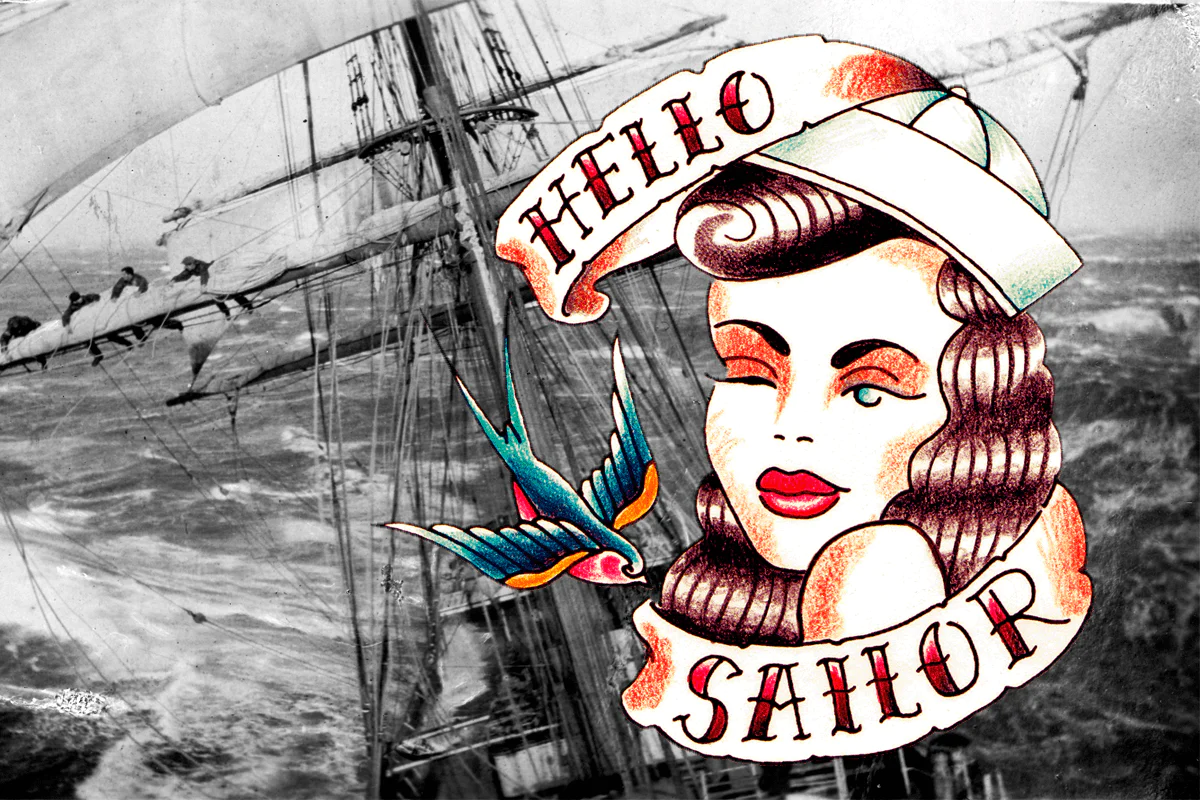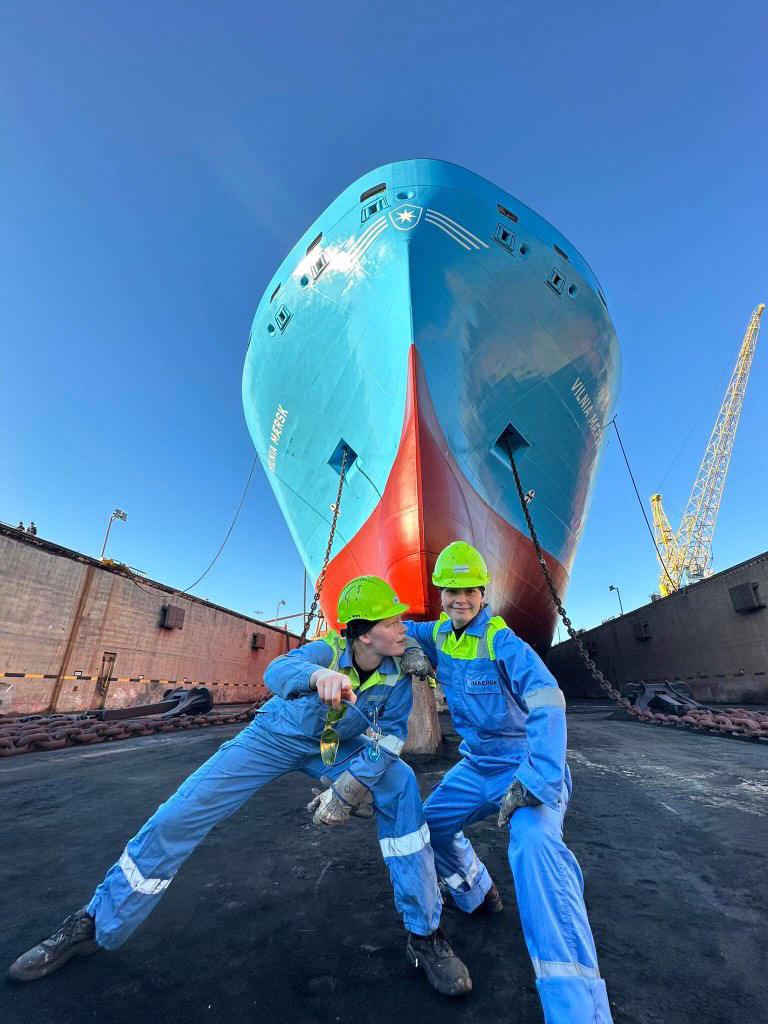Photos: iStock and Unsplash
Culture of masculinity and harassment
A negative attitude to having women onboard has been reported in numerous comments by women in the past as well as in current times. It should be a requirement for fishers and sailors to show mutual respect regardless of gender. The hierarchy onboard may place high performance demands on fishers, but give them a low degree of decision-making compared to captains. That situation may contribute to a rough working environment. But why should it be like that? And is it the case that women work harder on board to prove their capabilities because of a tough and demanding work culture?
There are several superstitions related to seafaring. Such superstitions revolve around many ancient notion of luck and ill omens for the vessel concerned. One example is that women, especially redhaired women, and bananas should be banned from boats – as illogical as that may sound. Women who have worked as observers (marine biologists) repeatedly report being regarded with suspicion due to their gender on board (oral comments, EU Marine Band, 2023). The origin of the superstition banning women from boats derives from ancient times, when it was believed that all women were witches bringing storms and disaster. Ironically, naked women on board were seen as bringing good luck. Naked women were thought to calm the sea. That explains why ships and yachts typically had a figure of a topless women at the bow of their vessel. The figure’s bare breasts were thought to shame the stormy seas into calm, with her eyes guiding the seamen to safety (Crew HQ, n.d.).
The culture of masculinity, replete with sarcasm, sexist attitudes towards women, dark humour and a rough, competitive atmosphere on board some vessels has been generally accepted and in some cases been perceived as charming (see the song lyrics above). However, it is not an attractive environment for women and does not help at all in reducing negative stereotypes of women in the maritime sector. However, with increased equality in the labour market in general, the question is why mutual respect irrespective of gender is not the standard at sea. It would be reasonable to expect women’s access to work at sea to be better than ever.
This project was spurred by a striking incidence in Norway. In 2021, 25-year-old Susanne Mortensen had been recruited onto a fisher boat in West Norway. Her experiences of bullying and verbal harassment prompted her to write a chronicle in the papers. She reported being humiliated as a woman. She was called a prostitute (whore), bullied for being weak or hysterical and called a “fettkjerring“ (an insulting word for someone who tricks you). In the chronicle she wrote that she was utterly ashamed (dritflau) on behalf of organisations, shipping companies, trade unions, colleagues and all others who had just stood by and watched the bullying without saying or doing anything. A year after writing the chronicle (in 2022), she ascertained that little change had been made, drawing the conclusion that the industry did not agree with her (NRK, 2022). The industry in Bergen made an attempt to organise a conference but of 300 participants only 11 men showed up (NRK, 2022). That may be the core of the problem; as soon as improving gender equality is on the agenda, men fail to attend. However, she was later awarded a prize by Tromsø municipality for showing great personal courage and taking a risk by coming forward with her case.

“The prize winner has highlighted the issue of women in an occupation dominated by men. She has also shown clear intuition and understanding by not criticising individual persons but elevating the discussion to the level of societal institutions. Moreover she has contributed to establishment of the organisation “HUN FISKER” (EN: She Fishes), which sets out to protect the interests of female fishers”
– Tromsø municipality 2022
In 2021 this was the second equality prize award given to Mortensen. She was also presented with the Labour Union (LO) award.
In 2017, the #MeToo movement highlighted sexual harassment in various professions and contexts. Under the hashtag #lättaankar (anchors aweigh), over 1,150 female seafarers in Sweden shared their stories. Working at sea, sometimes for several months in a row, means that a victim of bullying and harassment has limited options to seek support from friends and family (Linneus University, 2021). The purpose of the project, which ended in 2021, was to identify and describe measures to prevent bullying and harassment, and to promote gender diversity and a good organisational and social working environment in the maritime sector. An evaluation of the measures was performed together with industry representatives. The overall project aim was to communicate useful methods and strategies, with clear descriptions of what such practices involve and why they work (ibid). The results show that workplace bullying and harassment is a substantial problem in the maritime industry. The geographical scope of the study was international and included Denmark, Norway, Sweden and Finland among the Nordic countries. The perpetrators of bullying and harassment are commonly found among supervisors, from senior crew members down to subordinate crew members, followed by co-workers. Nine percent of the perpetrators were passengers (Österman & Boström, 2021, p.5). Also mentioned in the literature is that a high workload, long working hours, too many and conflicting tasks and fatigue lead to increased tension that may cause conflicts (Forsell in Österman & Boström, 2021). Iso-strain work (high job demands, low decision-latitude and low social support) is associated with experiencing harassment or offensive actions. Women in shipping thus endure worse conditions than men (Ritzau, 2021).
Gender-identity management is a strategy used by women seafarers to cope with – and in some cases to avoid – confrontation on ships. Such strategies result in women adopting behaviour usually associated with a masculine identity, or altering their appearance, such as their clothing or hair style, accordingly. They often have to work harder in order to “prove themselves” or to seek acceptance and be seen as able to perform their job (ILO, 2019). Isolation or feeling lonely on board can be alleviated by recruiting more than one woman on board, thus contributing to a more positive experience.
In her book “Sea Women of Iceland”, Margaret Willson explains the culture on board:
“Because crews are on the boats for an extended period, time at sea is more than work; it is a life. The physical exertion, hazing, and gender issues are part of this life, but so is a shared existence of adventure and the passing of time together between bouts of hard work. Many sea-women talked about, and demonstrated through their laughter and jokes that they not only participated in, but also very much enjoyed, the ship humor. Everyone is working hard, and in this challenging environment, a laugh can be a lifesaver. Humor can be a close companion to courage, keeping exhaustion and even panic at bay…Most of the women said that they participated in pranks and ongoing gags; they hung certain fish on the pipes above line workers‘ heads so the fish would fall on them, engaged in running jokes over the radio between ships, teased and got teased. All the experienced seawomen also said that ribald joking between crew members was common, a part of the ship culture.“
–Willson, 2016, 193-194
While research in this field is growing, there is a general need for future research involving substantial qualitative fieldwork. Furthermore, there is a need to address underlying causes of workplace bullying and harassment and ensure decent employment and working conditions at sea. Managers ashore and officers on board must be provided with adequate resources, usable tools and sufficient time for proactive work (Österman & Boström, 2021). The Nordic cooperation through Nordic Information on Gender (NIKK) has mobilised work in various fields that focuses on effects of a gender-segregated labour market and impacts of harassment and gender discriminatory practices (Lundqvist, Simonsson & Widegren, 2023). However, women at sea have not been on their radar.
The attractiveness of entering the maritime or the shipping industry can be improved by actions that decrease the feeling of discrimination. One of the discriminatory aspects mentioned is that the working outfit usually does not come in women’s sizes. The Norwegian company Leroy decided to address that problem and enabled their female staff to finally get workwear that fits. https://www.leroyseafood.com/en/about-us/news/women-to-finally-get-workwear-that-fits/
That is a seemingly small but important step towards increasing diversity inclusiveness in the sector.

The “Go to Sea!” campaign was launched in November 2008 in association with the International Labour Organization, the “Round Table” of shipping NGOs – BIMCO, ICS/ISF, INTERCARGO and INTERTANKO – and the International Transport Workers’ Federation. This campaign recognises that there is a need to have a pool of competent and efficient seafarers to meet future demand. Accordingly, the aim of the campaign is the promotion of seafaring as an attractive career option for young people. That includes highlighting the sector as one that could provide a stimulating and rewarding career, both at sea and in the sector as a whole. Activities included the establishment and maintenance of training institutions, providing support to new and experienced seafarers during their education and training, highlighting opportunities available to female seafarers, having gender-friendly accommodation on board, media promotion and campaign endorsements. This initiative further encourages industry stakeholders and governments to mount their own campaigns aimed at improving seafarer recruitment.
Source: Go to Sea! A Campaign to attract entrants to the shipping industry, IMO, ILO et al. & ILO, 2019.
Photo: Carla Bro and Clara Svarre Petersen (Denmark) in action (private photo)
Photo: Carla Bro and Clara Svarre Petersen (Denmark) in action (private photo)